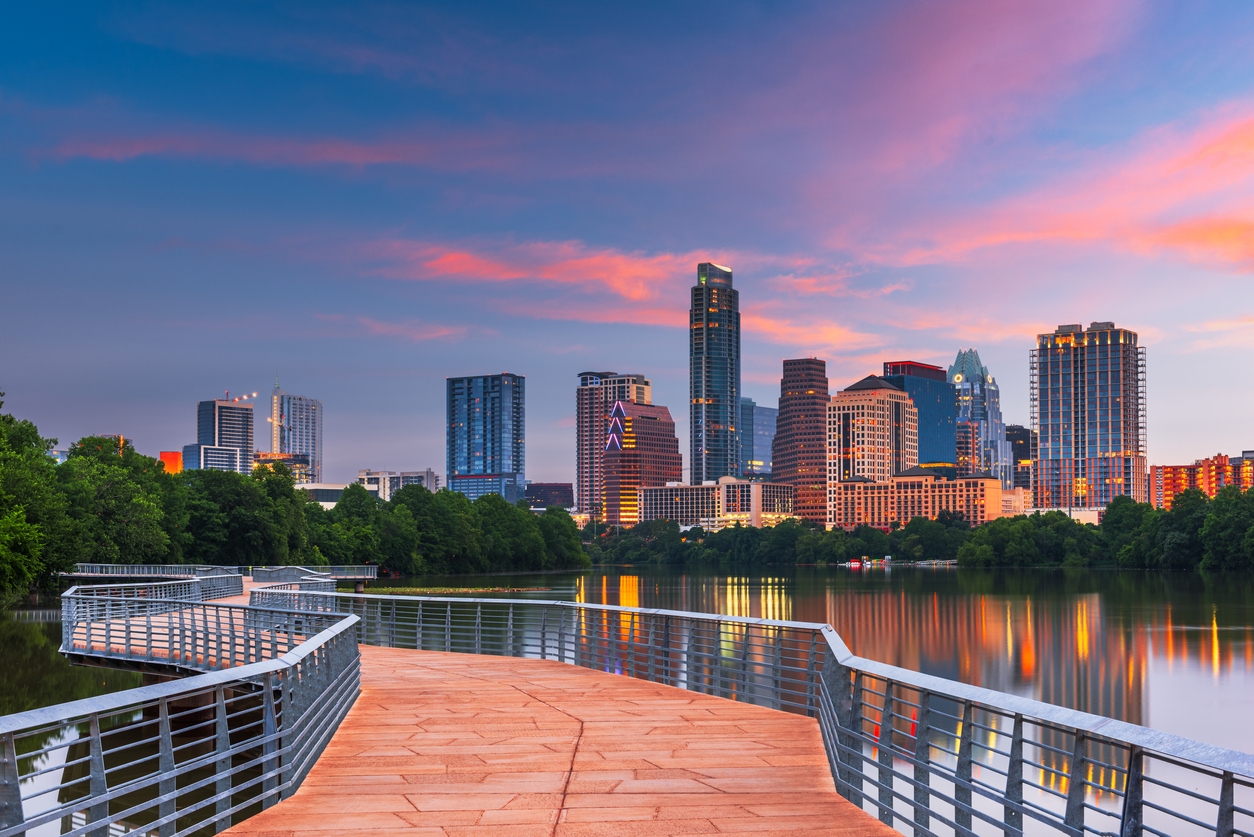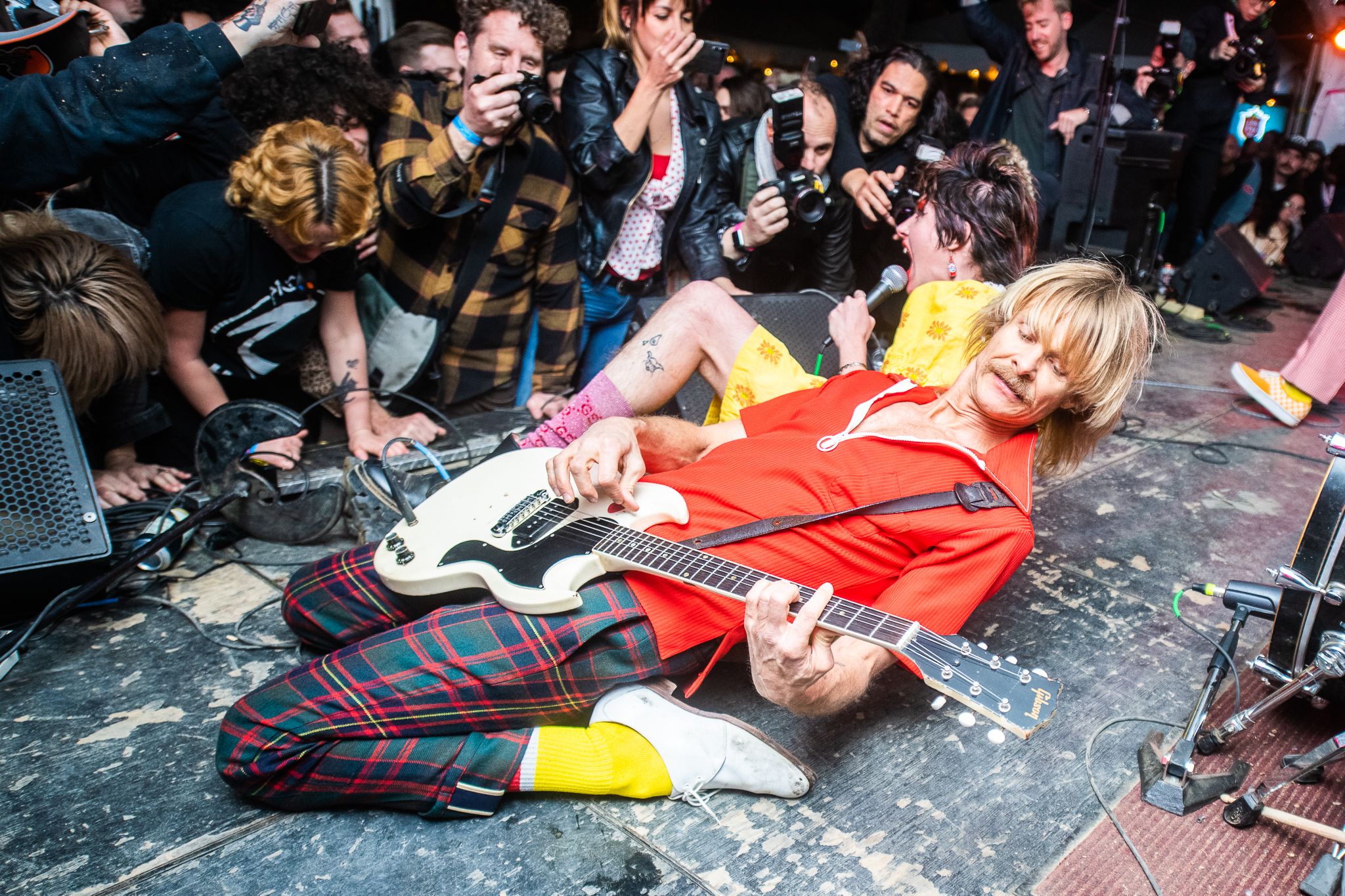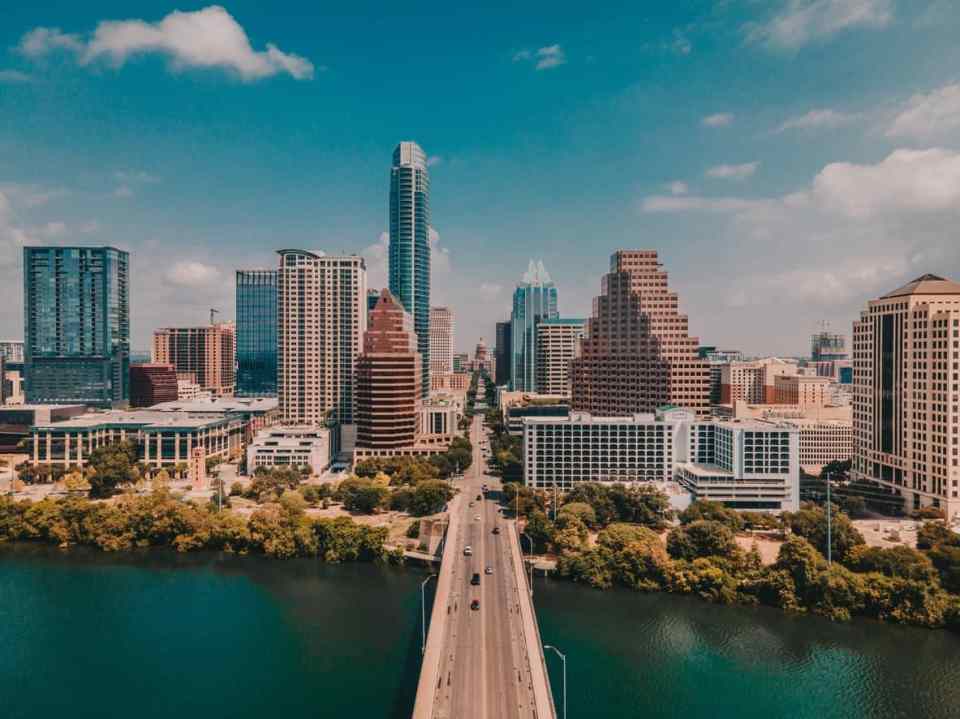One of Austin’s monikers is the City of the Violet Crown. It comes from the beguiling atmospheric shenanigans known as the Belt of Venus that casts a bar of pinkish, purplish haze above the horizon at sunrise and sunset when the city’s Mexican free-tailed bats — about 750,000 of them — are either returning to or leaving from hanging out under South Congress bridge over the Colorado River flowing through the city.
‘Austin, like Texas generally, has a big, eccentric personality,’ says William Apt, an attorney who attended the University of Texas at Austin in the mid-seventies before coming back to Austin from New York in the early 1980s. Austin was just a sleepy college town when Apt first arrived. The major employers were the university and the state government. Most of the hip action centred around the ‘Drag’ adjacent the university. ‘There wasn’t anything else except a few outposts like the Split Rail bar on South Lamar, the Soap Creek Saloon on Bee Cave Road, and, of course, the Armadillo World Headquarters at the corner of South 1st Street and Barton Springs Road,’ Apt says. When he returned in 1982, Austin remained pretty mellow. The building on South Congress now housing the immensely popular Güero’s Taco Bar was an old feed store that sold baby chicks, while Whole Foods was a small local grocery store on Lamar near 8th Street. ‘Who knew? Austin began to explode in the early to mid-80s and has never stopped.’

Things had certainly changed by the time I first encountered Austin in 2010 attending journalism graduate school. But the culture shock proffered was still welcome. For one, on campus I was surrounded by 50,000 students, the female half of them wearing tiny shorts against the heat — a striking change to the military uniforms I’d recently known. A Mexican flavour from the border about 200 miles south permeated the city. There was the cowboy thing, obviously: people in Stetsons and snakeskin cowboy boots. The average pick-up truck was the size of an armoured personal carrier; the Lone Star State flags flying by petrol stations covered half the sky. The 100-per-cent-agave tequila margaritas were delicious. Continually nourished all that and more was the essential factor: Austin’s locality in the heart of Texas. As Apt notes: neighbouring New Mexico ‘has art and culture, but Texas has soul.’
Much of that is still evident today, but now Austin exemplifies both the best and worst of the U.S., where soul collides with unfettered capitalism. The downtown skyline continues to fill up with fancy hotels, high-rise apartment blocks and corporate towers. The unrelenting real estate prices continues to drive iconic restaurants, bars and music venues out of business. The two opposing personalities of the city are in stark evidence right now as the much-hyped SXSW festival returns to Austin after two years of pandemic-caused absence. Alternative, counter-culture types share the sidewalks with stunningly manicured ladies and rich-looking men radiating self-assurance and megawatt smiles, or weave their skateboards and bicycles between the latter’s Teslas and Maseratis.

Austin’s glitzy side was boosted during the pandemic. An exodus of monied Californians and New Yorkers headed to Austin due to more relaxed Covid-19 regulations and more bang for their buck (while pushing up the prices for everyone else—the other day I offered to get someone a coffee and then had to hand over $9 for an almond-flavoured latte).
For a taste of old Austin, head for a migas taco at Cisco’s. It’s where Lyndon Baines Johnson breakfasted before becoming president. I used to eat my tacos at the same table as Julian Read who was press secretary for the Texas governor when President John Kennedy was killed in Dallas. When Julian told his stories, you were spellbound. Texans are fine raconteurs. Must be something to do with talking around campfires during former times. Now a copy of Julian’s memorial service is stuck on a wall — one wonders if his sort is gone from Austin forever — near a Bible propped open to Psalm 23. Cisco’s continues to hold out as one of the only family-run diners left on East 6th Street that has gentrified from an area housing ethnic minorities into condo complexes, boutiques and over-priced restaurants amid lots of yoga mats being carried back to those condos. But like any great city, Austin always manages to redeem itself, or to at least distract you from the uncomfortable contradictions.
‘There is nothing like hanging out and having a swim at Barton Springs on a summer afternoon, then going to Guero’s for margaritas and Mexican food, and then in the evening stumbling out the front door,’ Apt says. ‘Yeah, it’s an oven outside. But the air is soft and the twilight gorgeous.’







Comments